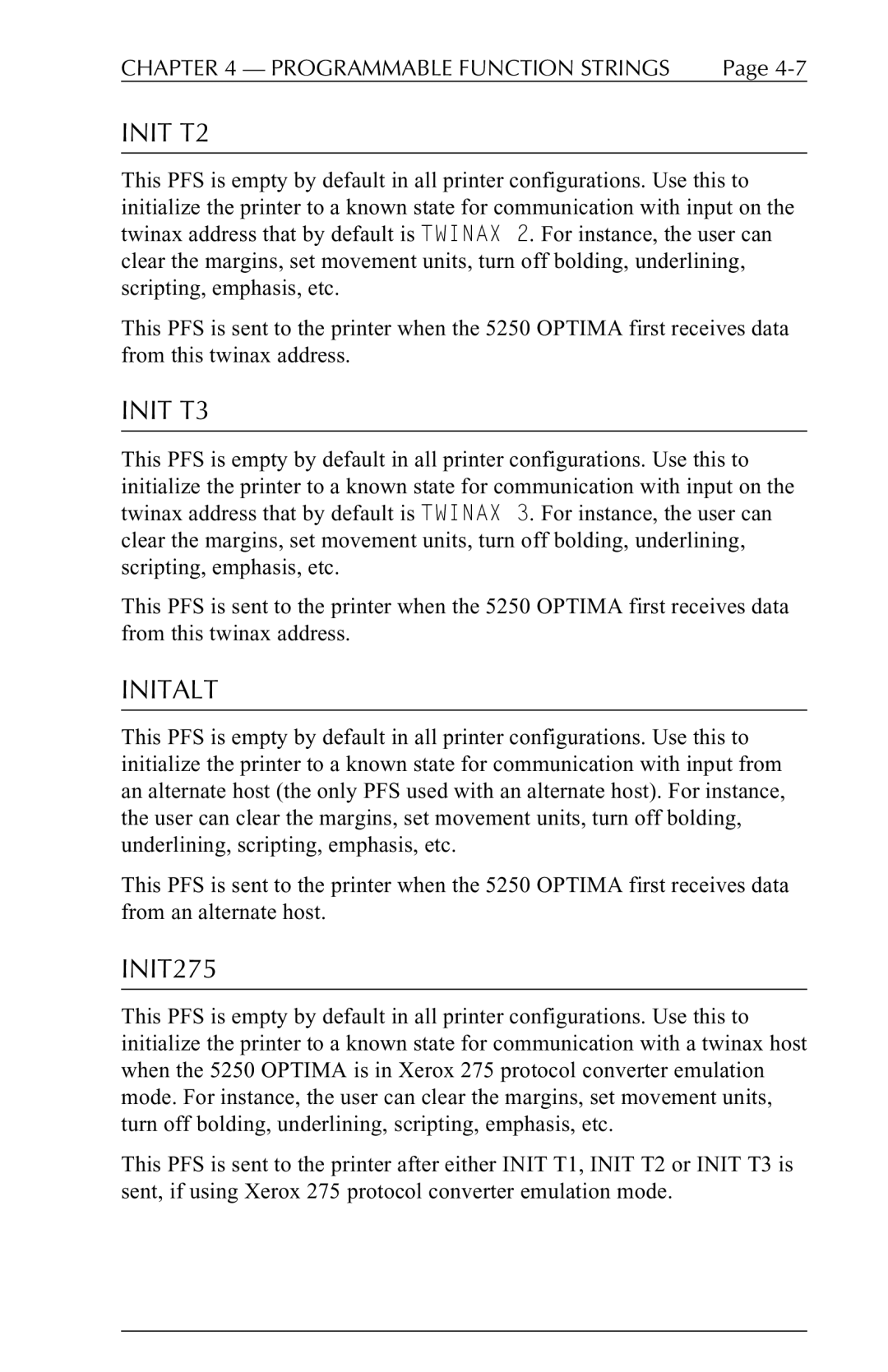
CHAPTER 4 — PROGRAMMABLE FUNCTION STRINGS | Page |
INIT T2
This PFS is empty by default in all printer configurations. Use this to initialize the printer to a known state for communication with input on the twinax address that by default is TWINAX 2. For instance, the user can clear the margins, set movement units, turn off bolding, underlining, scripting, emphasis, etc.
This PFS is sent to the printer when the 5250 OPTIMA first receives data from this twinax address.
INIT T3
This PFS is empty by default in all printer configurations. Use this to initialize the printer to a known state for communication with input on the twinax address that by default is TWINAX 3. For instance, the user can clear the margins, set movement units, turn off bolding, underlining, scripting, emphasis, etc.
This PFS is sent to the printer when the 5250 OPTIMA first receives data from this twinax address.
INITALT
This PFS is empty by default in all printer configurations. Use this to initialize the printer to a known state for communication with input from an alternate host (the only PFS used with an alternate host). For instance, the user can clear the margins, set movement units, turn off bolding, underlining, scripting, emphasis, etc.
This PFS is sent to the printer when the 5250 OPTIMA first receives data from an alternate host.
INIT275
This PFS is empty by default in all printer configurations. Use this to initialize the printer to a known state for communication with a twinax host when the 5250 OPTIMA is in Xerox 275 protocol converter emulation mode. For instance, the user can clear the margins, set movement units, turn off bolding, underlining, scripting, emphasis, etc.
This PFS is sent to the printer after either INIT T1, INIT T2 or INIT T3 is sent, if using Xerox 275 protocol converter emulation mode.
